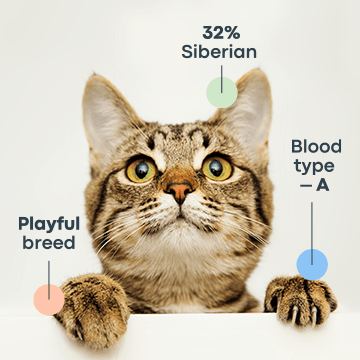So, you notice bald spots on your cat that were not present before and wonder why your cat is losing hair and how you can stop them from going bald. Usually, cats shedding hair is common but if there is massive hair loss, look out for other symptoms and underlying issues.
Bald patches can occur due to varied reasons, such as a fungal infection or flea bite, which you must address and control to restrict balding in cats. The article explores how bald patches on cats look and why bald patches in cats develop to help manage and treat them effectively.
What Do Bald Patches on Cats Look Like?
Cat bald spots may appear as a singular patch covering a larger area or bald spots in more than one area. The appearance of bald patches on cats can pop up on any part of the body, which typically depends on the cause.
If you notice a bald patch on your cat’s skin, you must consult the veterinarian so that they can identify the cause and advise you accordingly. They usually find the cause of the bald patches on cats just by looking at it.
What Is the Cause of Bald Patches on Cats?
Bald patches on cats can appear due to different plausible causes, such as overgrooming, external parasites, and allergies. So, if you notice an unusual amount of hair loss or bald patches, you must see your veterinarian, know the cause and provide adequate treatment.
Fleas and other external parasites
One of the most common causes of bald patches on cats is fleas and other external parasites, especially on their lower back and tail. It occurs when a flea or mite bites and your cat’s skin reacts to their saliva, and consequently, your feline overgrooms their fur.
Here, you may see a small to large cat bald spot and catch your cat itching excessively because of an allergic reaction to a flea bite. You can treat hair loss and scabs on cats with products like ‘spot ons’ that eliminate external parasites such as mites and fleas.
Cat overgrooming
Overgrooming may also be the cause of your cat losing hair. Sometimes, overgrooming may point to a neurological disorder, especially in older cats. However, this behavior is typically driven by stress or anxiety. Bald patches due to this behavior, are commonly located around the stomach and the tail.
If your veterinarian finds that overgrooming and cat alopecia are stress-related, it is imperative to prevent this behavior. You can do that by intervening and distracting your cat with toys, treats, and cuddles.
Also, you may need a veterinary behaviorist’s help to understand the cause of stress and ways to reduce it, such as a change in environment or something present in the environment that they find dangerous or using a feline pheromone diffuser that should put your feline companion at ease. Cat overgrooming may turn into a long-term habit if left unchecked.
Allergies
Allergic reactions to certain foods or plants may cause itching, leading to constant scratching and chewing, and ultimately cat losing hair.
And so, allergies are another factor causing cat bald spots. Cats can have an allergic reaction to something they have consumed or an allergen they have come into contact with. It can cause excessive itching, resulting in baldness, or allergy may directly cause hair loss.
If you notice other symptoms, such as itching or dry skin with bald patches on your cat, an allergic reaction may have caused it. You must visit the veterinarian to get your cat checked and identify what could be in their environment or diet that may have triggered an allergic reaction. The next step would be eliminating the allergen from your cat’s environment and diet and seeking the veterinarian's advice to allow only specified food.
Ringworm or fungal infection
Ringworm is a fungal infection that leads to ring-shaped lesions on the skin, where your cat may have a bald area or a thinner covering of hair around the infected area. Also, it is quite contagious and can be transmitted through contact with fungal spores, which can live up to 12 to 20 months and cause infection to your cat from places an infected animal has been to.
The veterinarian typically diagnoses ringworm by carrying out a fungal culture on a hair sample in a laboratory. Moreover, you must stay away from the affected area if you doubt the cat has ringworm infection because humans can also catch it. Fungal infection is normally treated with medicated shampoos and other medications.
Conclusion
Whenever you spot your cat losing hair abnormally, consult the veterinarian and identify the condition causing it. The key to a healthy pet is timely understanding of the problem and providing proper care.
Frequently Asked Questions
Why does my cat have a bald spot?
Cat bald spots may appear due to various reasons like fleas and other external parasite bites, overgrooming due to stress/anxiety, ringworm or fungal infection, and allergies.
Why is my cat shedding so much?
According to an article by Zoetis Pet Care, there may be numerous reasons the cat is shedding excessively, some common, others serious, such as an allergy, age, parasites, hormonal imbalance, skin infection, stress, or poor diet.




